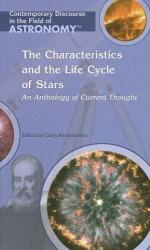|
This section contains 523 words (approx. 2 pages at 300 words per page) |

|
Stellar evolution refers to the life-cycle of a star. Ancient sky-watchers believed the heavens were perfect and unchanging, but in fact the stars are constantly undergoing change. This change is only noticeable over the course of a great deal of time. Since it is impossible to observe the entire life-cycle of a given star, astronomers have search the heavens for centuries for clues to understand what happens to stars as they age.
French astronomer Pierre Laplace devised a theory in 1796 to explain how the Sun and planets originated. He spoke of a great rotating nebula, or cloud of gas. The central portion condensed into the Sun, while the outer rings clumped together and became the planets. German philosopher Immanuel Kant (1724-1804) had devised a similar theory in 1755.
In 1938, German-American physicist Hans Bethe worked out the details of what powers the stars. He proposed that the hydrogen...
|
This section contains 523 words (approx. 2 pages at 300 words per page) |

|


